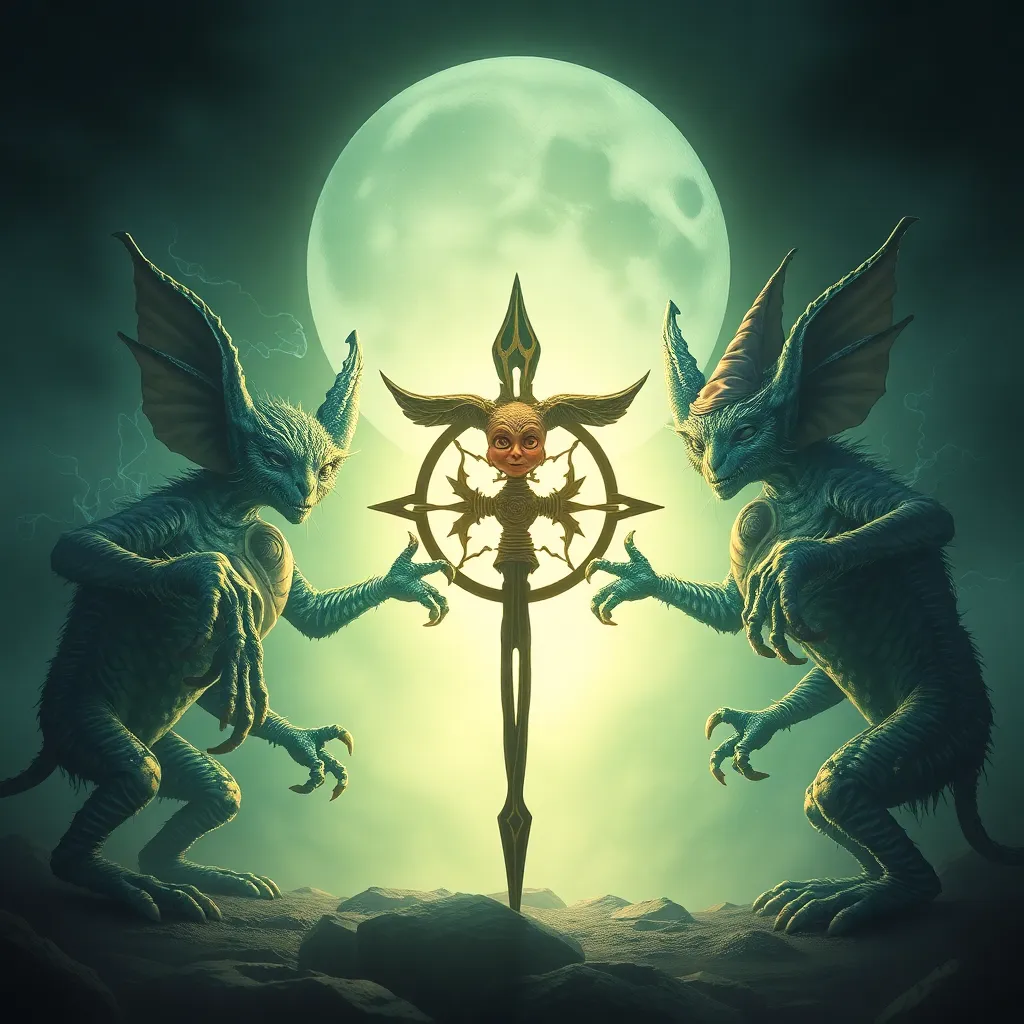The Hydra’s Gaze: Examining the Monster’s Power to Control and Influence
I. Introduction
The Hydra, a formidable monster from Greek mythology, has fascinated audiences for centuries with its many heads and regenerative abilities. This creature, often depicted as a serpent-like being with multiple heads, symbolizes not only physical strength but also the complex dynamics of control and influence. The gaze of the Hydra serves as a powerful metaphor for the ways in which individuals and societies can be manipulated and dominated.
The purpose of this article is to explore the themes of control and influence as embodied by the Hydra. By examining its mythological origins, psychological implications, representations in literature and art, and contemporary interpretations, we seek to understand the dual nature of influence and strategies for resistance against manipulative forces.
II. The Mythological Origins of the Hydra
The Hydra is deeply rooted in Greek mythology, particularly in the tales surrounding Heracles and his twelve labors. According to legend, the Hydra resided in the swamps of Lerna and terrorized nearby communities. Each time one of its heads was severed, two more would grow in its place, making it nearly invincible.
Key characteristics of the Hydra include:
- Multiple heads, representing complexity and multiplicity of challenges.
- Regenerative abilities, symbolizing resilience and the persistent nature of certain influences.
- Venomous breath and blood, which signify the toxic effects of manipulation and control.
The Hydra’s role in the Labors of Heracles serves as a profound allegory for overcoming seemingly insurmountable obstacles, illustrating the struggle against oppressive forces.
III. The Power of the Gaze: Psychological Implications
The concept of the gaze has significant implications in both psychology and philosophy. It often pertains to how perception shapes our understanding of power dynamics. The Hydra’s gaze symbolizes not only observation but also the capacity to manipulate perceptions to influence behavior.
How the Hydra’s gaze symbolizes manipulation and control includes:
- Observation leading to judgment: The act of being watched can alter behavior.
- Creation of fear: The Hydra instills fear, which can be a powerful tool for control.
- Illusion of power: Those who possess the ability to gaze upon others may create a false sense of superiority.
In terms of perception’s impact on power dynamics, the Hydra illustrates how control can be exerted through the manipulation of how individuals see themselves and the world around them.
IV. The Hydra in Literature and Art
The Hydra has been a prominent figure in classical literature, from the epic poems of Homer to the tragedies of ancient playwrights. In these narratives, the creature often symbolizes the chaos and dangers inherent in human existence.
Artistic interpretations of the Hydra have varied widely, influencing cultural perceptions over time. Notable representations include:
- Ancient pottery and sculptures depicting Heracles battling the Hydra.
- Renaissance paintings illustrating the monster’s fierce nature.
- Modern adaptations in films and literature that reinterpret the Hydra as a metaphor for contemporary challenges.
The Hydra serves as a recurring motif in modern narratives, often reimagined as a symbol of societal issues such as corruption, power struggles, and the fight against systemic oppression.
V. Contemporary Interpretations of the Hydra’s Gaze
In today’s society, the Hydra can be seen as a symbol of various modern issues, particularly concerning media influence and the pervasive nature of control in our lives. The Hydra’s traits are embodied by contemporary figures who manipulate public perception, such as political leaders and media moguls.
Case studies of contemporary figures embodying the Hydra’s traits include:
- Politicians who use fear tactics to manipulate voters.
- Media influencers who shape public opinion through curated narratives.
- Corporate leaders whose decisions impact societal norms and values.
Furthermore, the role of fear and allure in control mechanisms remains significant, as individuals are often drawn to powerful figures even as they may be subjected to manipulation.
VI. The Dual Nature of Influence: Empowerment vs. Manipulation
The fine line between influence and coercion is a critical theme when discussing the Hydra’s gaze. While influence can lead to empowerment and positive change, it can also result in manipulation and harm. The ethical implications of wielding power similar to the Hydra are profound and multifaceted.
Positive outcomes of influence may include:
- Inspiring leaders who motivate others towards a common goal.
- Community activists who empower marginalized voices.
Conversely, negative outcomes often stem from:
- Deceptive practices that undermine trust.
- Abuse of power that leads to societal disintegration.
Understanding these dynamics is essential for navigating the complexities of influence in various contexts.
VII. Strategies to Resist the Hydra’s Gaze
Recognizing manipulation and control in personal and societal contexts is the first step towards resistance. Here are some strategies to build resilience against the Hydra’s gaze:
- Awareness: Be vigilant about the influences around you and question the motives behind them.
- Critical thinking: Develop the ability to analyze information and discern truth from manipulation.
- Empowerment: Engage in communities and support systems that foster collective strength and resilience.
By reclaiming agency and building resilience, individuals can effectively resist the toxic influences that seek to control them.
VIII. Conclusion
In summary, the Hydra’s significance as a symbol of control and influence is profound and multifaceted. Through its mythological origins, psychological implications, and representations in literature and art, we see how the creature embodies the complexities of power dynamics.
Ultimately, fostering awareness and resistance against manipulative forces is crucial in today’s world. By encouraging critical thinking and self-awareness, we can empower ourselves and others to navigate the challenges posed by the Hydra’s gaze.




